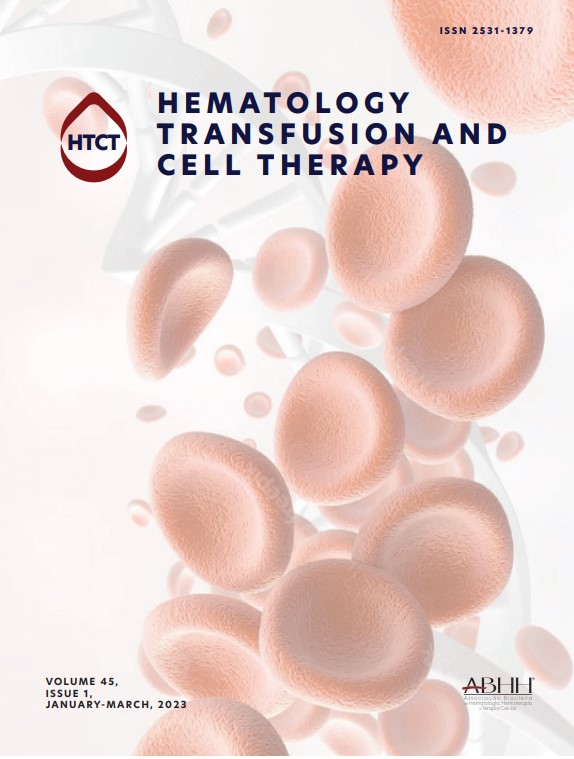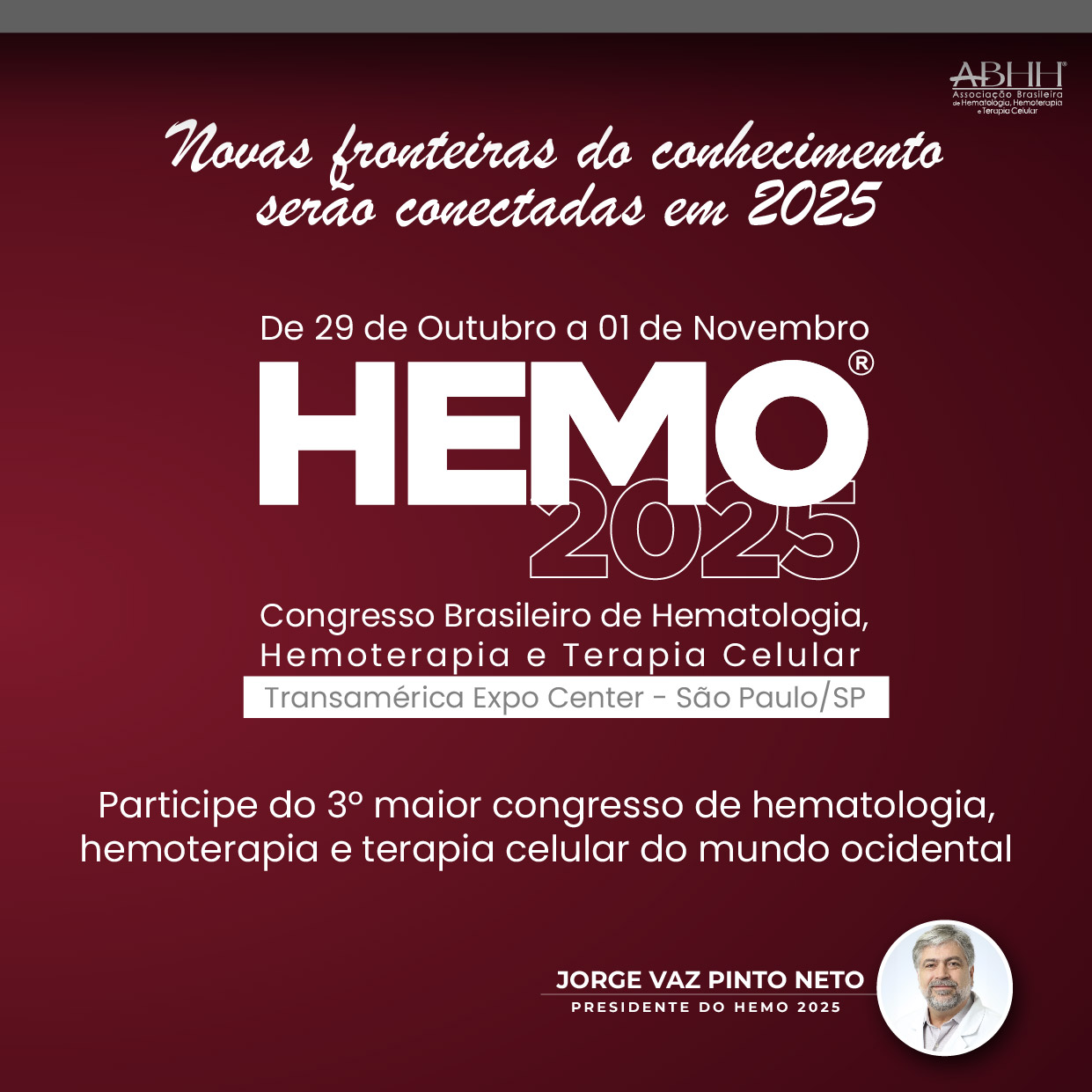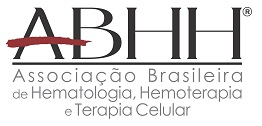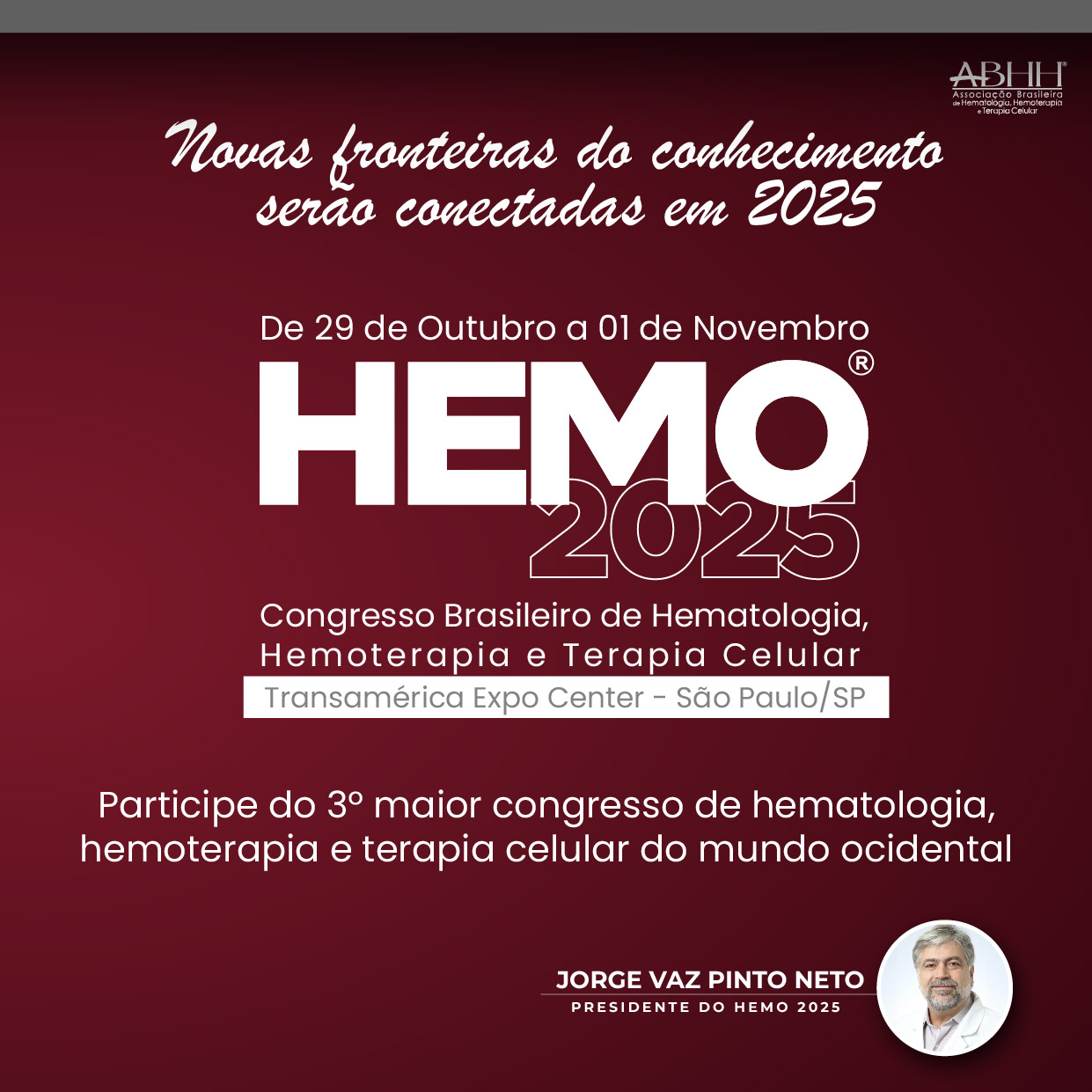Hematopoietic stem cell transplantation is the curative option for patients with myelodysplastic syndrome; however, it requires a long post-transplantation follow-up. A 53-year-old woman with a diagnosis of myelodysplastic syndrome underwent related donor allogeneic hematopoietic stem cell transplantation in July 2006. Three months after transplantation, a comparative short tandem repeat analysis between donor and recipient revealed full chimerism, indicating complete, healthy bone marrow reconstitution. Three years and ten months after hematopoietic stem cell transplantation, the patient developed leukopenia and thrombocytopenia. Another short tandem repeat analysis was carried out which showed mixed chimerism (52.62%), indicating relapsed disease. A donor lymphocyte infusion was administered. The purpose of donor lymphocyte infusion is to induce a graft-versus-leukemia effect; in fact, this donor's lymphocyte infusion induced full chimerism. Successive short tandem repeat analyses were performed as part of post-transplantation follow-up, and in July 2010, one such analysis again showed mixed chimerism (64.25%). Based on this finding, a second donor lymphocyte infusion was administered, but failed to eradicate the disease. In September 2011, the patient presented with relapsed disease, and a second related donor allogeneic hematopoietic stem cell transplantation was performed. Subsequent short tandem repeat analyses revealed full chimerism, indicating complete bone marrow reconstitution. We conclude that quantitative detection of mixed chimerism is an important diagnostic tool that can guide early therapeutic intervention.
Hematopoietic stem cell transplantation (HSCT) is an effective treatment for patients with immunological and hematologic diseases, including myelodysplastic syndrome (MDS).1 In HSCT, the donor cells restore the recipient bone marrow, producing new blood cells that are responsible for the hematopoietic and immunological reconstitution of the recipient. Consequently, HSCT results in a restoration of hematopoiesis and in a gradual change of hematopoietic cell genetics from the recipient profile to the donor profile. This change of genetic profile, in which donor and recipient hematopoietic cells can coexist, is called chimerism.2
One of the methods used to verify chimerism is short tandem repeat (STR) testing. STRs, or microsatellites, are repetitive sequences of three to seven base pairs that identify different alleles by the number of copies of repetitive sequences contained in the DNA region analyzed. STRs exhibit a high level of heterozygosity, high polymorphism and are highly informative of human individuality.3
The study of STRs uses the polymerase chain reaction (PCR) technique, which enables the selective amplification of specific DNA sequences. The advantages of PCR include the small number of cells required for analysis and the technique's high sensitivity, as it is able to detect 1 cell in 1×106.3
Thus, the role of STRs as markers of chimerism status after HSCT has been used to guide clinical interventions to achieve success in HSCT.4
Case reportOn 10 November 2004, a 53-year-old woman was diagnosed with MDS with an International Prognostic Scoring System (IPSS) stage of Intermediate 2. Her karyotype at diagnosis featured deletions of chromosomes 1 and 6. The patient was referred for related donor HSCT (identical HLA sibling – Donor #1) as a therapeutic option due to the high risk of transformation to acute myeloid leukemia (AML). Prior to HSCT, an analysis of the STR profiles of 15 loci and the amelogenin locus was conducted in donor and recipient blood samples to enable follow-up of the changes in genetic profile in recipient hematopoietic cells which would signal reconstitution of hematopoiesis and engraftment. STR analysis was performed by multiplex PCR and the detection of the PCR products was performed in an ABI 3100 Avant Genetic Analyzer with the Identifiler kit (Applied Biosystems®).4
The pre-transplantation conditioning regimen consisted of busulfan and cyclophosphamide, with the HSCT being performed in July 2006 with 2.4×106CD34+cells/kg. The patient did not develop acute graft-versus-host disease (GVHD). Engraftment occurred at Day +26 as evaluated by blood count and bone marrow aspiration. Three months after the HSCT, a follow-up STR analysis revealed full chimerism; in other words, the genetic profile in the recipient's blood sample was identical to the donor profile, indicating full engraftment without molecular evidence of disease recurrence.
In April 2010, three years and ten months after the HSCT, the patient developed leukopenia and thrombocytopenia. Another STR analysis was performed which showed mixed chimerism (donor and receptor cells coexisting), indicating relapse of the disease. Chimerism was quantified using the area under the curve peaks of the electropherogram as per Kristt et al.4 using five informative loci of STRs and the result was 52.62% donor chimerism.
To halt disease progression, a donor lymphocyte infusion (DLI) was performed with the objective of inducing a graft-versus-leukemia (GVL) reaction. The patient received 1×107CD3+cells/kg. Two months after the infusion, in June 2010, the patient again presented full chimerism, indicating that the DLI was effective.
A further follow-up was performed by blood counts and bone marrow aspiration. The patient remained clinically stable and without clinical or hematological evidence of relapse until July 2010, when STR analysis showed 64.25% donor chimerism. Based on these results, a second DLI was performed in an attempt to induce an early GVL response and prevent a major recurrence. STR analysis performed after this DLI, in September 2010, revealed 51.20% donor chimerism, indicating the persistence of this phenomenon. Although mixed chimerism persisted, the patient remained clinically stable and the therapeutic options were evaluated.
In August 2011, the patient developed pancytopenia. As she had another HLA-identical sibling (Donor #2), a second HSCT was performed on 23 September 2011. The conditioning regimen consisted of busulfan and melphalan, and the HSCT was performed with an infusion of 1.6×106CD34+cells/kg. Engraftment occurred at Day +19 as evaluated by blood counts and bone marrow aspiration. The patient was tested for chimerism in October 2011, January 2012, September 2012 and September 2013. All investigations revealed full chimerism, indicating complete bone marrow recovery. Results are summarized in Table 1.
Results of short tandem repeat analysis in samples of recipient and donor peripheral blood.
| Locus | Recipient alleles before HSCT | Donor #1 alleles | Recipient alleles after first HSCT 10/2006 | Recipient alleles after first HSCT 4/2010 | Recipient alleles after first HSCT 6/2010 | Recipient alleles after first HSCT 7/2010 | Recipient alleles after first HSCT 9/2010 | Donor #2 alleles | Recipient alleles after second HSCT 16/09/2013 |
| AMELO | X,X | X,Y | X,Y | X,Y | X,Y | X,Y | X,Y | X,Y | X,Y |
| D5S818 | 11,13 | 11,13 | 11,13 | 11,13 | 11,13 | 11,13 | 11,13 | NT | NT |
| FGA | 19,24 | 19,23 | 19,23 | 19,23,24 | 19,23 | 19,23,24 | 19,23,24 | 21,23 | 21,23 |
| D19S433 | 13,14 | 13,– | 13,– | 13,14 | 13,– | 13,14 | 13,14 | NT | NT |
| vWA | 17,18 | 17,– | 17,– | 17,18 | 17,– | 17,18 | 17,18 | 14,18 | 14,18 |
| TPOX | 8,9 | 8,9 | 8,9 | 8,9 | 8,9 | 8,9 | 8,9 | 8,11 | 8,11 |
| D18S51 | 16,18 | 13,14 | 13,14 | 13,14,16,18 | 13,14 | 13,14,16,18 | 13,14,16,18 | 16,18 | 16,18 |
| D3S1358 | 15,16 | 15,16 | 15,16 | 15,16 | 15,16 | 15,16 | 15,16 | 15,16 | 15,16 |
| TH01 | 8,9.3 | 7,9.3 | 7,9.3 | 7,8,9.3 | 7,9.3 | 7,8,9.3 | 7,8,9.3 | 8,9.3 | 8,9.3 |
| D13S317 | 11,12 | 11,12 | 11,12 | 11,12 | 11,12 | 11,12 | 11,12 | 11,12 | 11,12 |
| D16S539 | 12,– | 12,13 | 12,13 | 12,13 | 12,13 | 12,13 | 12,13 | 12,– | 12,– |
| D2S1338 | 20,23 | 19,25 | 19,25 | 19,20,23,25 | 19,25 | 19,20,23,25 | 19,20,23,25 | NT | NT |
| D8S1179 | 13,14 | 13,– | 13,– | 13,14 | 13,– | 13,14 | 13,14 | 13 | 13 |
| D21S11 | 28,30 | 28,30 | 28,30 | 28,30 | 28,30 | 28,30 | 28,30 | NT | NT |
| D7S820 | 8,10 | 8,9 | 8,9 | 8,9,10 | 8,9 | 8,9,10 | 8,9,10 | 9,– | 9,– |
| CSF1PO | 10,11 | 10,13 | 10,13 | 10,13 | 10,13 | 10,13 | 10,13 | 10,13 | 10,13 |
| % Donor chimerism | – | – | Full chimerism | 52.62 | Full chimerism | 64.25 | 51.20 | – | Full chimerism |
HSCT: hematopoietic stem cell transplantation; NT: not tested.
One of the most widely used parameters for monitoring in the post-HSCT period is the donor:recipient DNA ratio. This condition is estimated and expressed as the percentage of donor chimerism. A value approaching 100% indicates a greater number of donor cells in the analyzed sample. After HSCT, the optimal goal is 100% donor chimerism. When this condition is achieved, it is known as ‘full chimerism’.4
Informative loci were used for calculation purposes, which was performed by measuring the area under the curve of the peaks on an electropherogram. The formula was (D1+D2/D1+D2+R1+R2)×100, where D1, D2, R1 and R2 represent the area under the curve of recipient and donor alleles.4 After the first HSCT, the FGA, TH01, D2S1338, D7S820 and D18S51 loci were used to calculate mixed chimerism, because they were informative loci. The calculated coefficient of variation was <10%. These results are consistent with the Kristt et al. acceptance criteria.5
It is well known that the success of HSCT depends, in part, on the GVL effect induced by the donor T lymphocytes. The GVL effect plays an important role in disease eradication in patients with hematologic malignancy treated by HSCT.1 In our patient, the purpose of administering a DLI was to initiate a GVL response capable of inhibiting the dysplastic clones that had resisted the conditioning and follow-up regimens. Administering a DLI on the basis of blood counts, bone marrow aspiration, and karyotype findings alone could expose the patient to an unnecessary risk of GVHD. Mixed chimerism quantification enables correct treatment decisions, such as performing DLIs only when adequate and necessary. Administration of a DLI to patients with donor chimerism ≥40% is strongly associated with conversion to full chimerism. In this case, the benefit of the DLI would be significantly superior to the risk of developing GVHD.6 Therefore, the importance of mixed chimerism quantification as a tool to support adequate, correct, and early treatment decisions cannot be overstated.
The second DLI administered to our patient failed to induce full chimerism, which suggests that this DLI was unable to achieve maximum antitumor effect and thus eradicate the disease. Campregher et al. found that patients with MDS with high-risk IPSS stages treated with DLI have better results than patients with intermediate IPSS. These authors found that the major response to the DLI observed in patients with MDS and high-risk IPSS is due to the high expression of tumor-associated antigens in these patients. This high antigen expression may make the neoplastic clone more susceptible to immune attack by the DLI.7
In the present case, administration of DLIs to a patient with IPSS Intermediate-2 MDS did not seem to produce a long-term result, but these DLIs were able to induce complete remission, with low risk of mortality at times when few therapeutic options were available. The quantification of mixed chimerism contributed to the decision to perform a second HSCT using another sibling as donor. At the time of writing, the patient was clinically stable, transfusion-independent, and without any clinical complications.
In this case, STR analysis through multiplex PCR followed by detection in a genetic analyzer allowed early clinical intervention and contributed decisively to post-transplantation therapy. Mixed chimerism quantification was of fundamental importance to support decisions about DLI administration. In conclusion, quantitative follow-up of the chimerism profile after HSCT is a valuable diagnostic tool that enables early intervention in the post-transplantation period.
Conflicts of interestThe authors declare no conflicts of interest.







